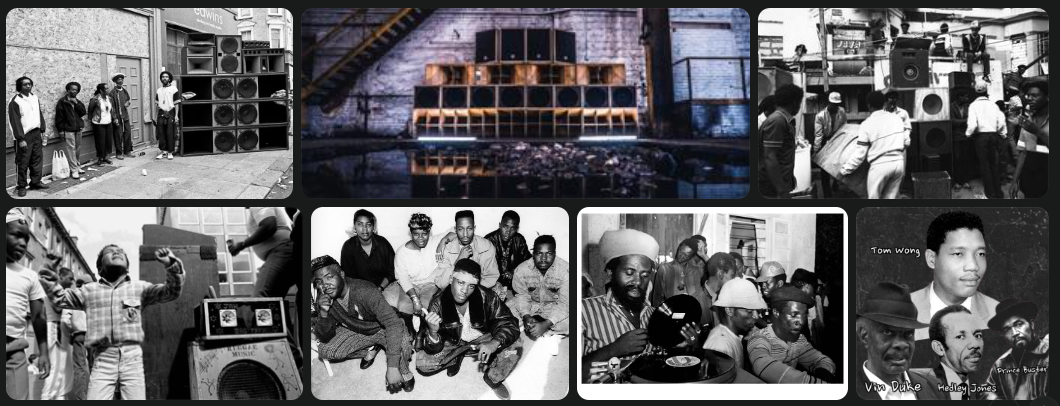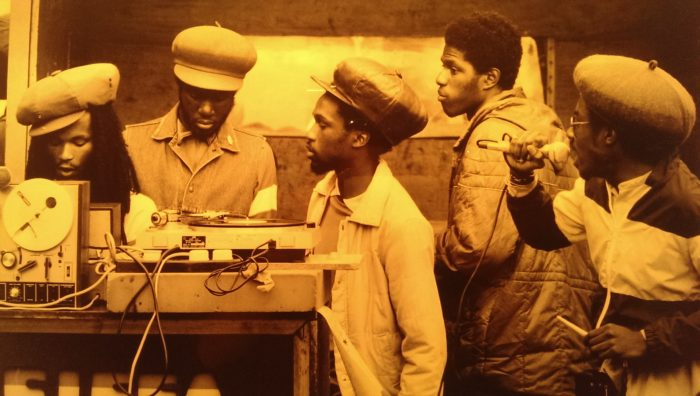Drum and Bass: From Jamaican Roots to the New Wave in TikTok's Music Scene
Editor's Note: This article offers an in-depth analysis based on a music documentary examining the historical development and modern revival of the Drum and Bass genre.
From Jamaican Shores to British Urban Centers: A Musical Genealogy
To trace the DNA of what we know today as Drum and Bass (DnB), one must journey beyond the 90s British rave scene and travel back to the streets of Jamaica. The identity of a musical genre often reveals itself more clearly through its evolution rather than its birth context, and few examples illustrate this better than DnB.
Jamaica's 'sound system' culture carried significance far beyond mere audio equipment. These were mobile party units comprised of DJs, MCs, and engineers that served as the central axis of community life. The "distinctively massive and thick bass" they created delivered an experience that transcended mere listening, allowing audiences to feel the vibrations throughout their entire bodies. In the early 1960s, this cultural DNA took root in British soil alongside Jamaican immigrants, and ironically, the fruit it bore would develop into something entirely different from its homeland origins.

Hackney's Rebellion: The Moment of Choosing Breakbeats Over House
In London's Hackney district during the 1980s, within the Jamaican immigrant community, the duo of PJ and Smiley established their own sound system. Their formation, 'Shut Up and Dance' (SUAD), embodied a straightforward musical philosophy true to its name. Their parties, held in church halls or abandoned buildings, weren't merely about hedonism but were founded on "a sense of mission to bring joy to Hackney's children."
The crucial musical divergence of this period came when SUAD broke away from the stable four-beat rhythm of house music that was sweeping across Europe. Under the influence of hip-hop culture that Smiley had experienced in New York, particularly from Def Jam Records, they declared: "We weren't interested in House's four-beat pattern." Instead, what they chose were breakbeats – drum solo sections extracted from hip-hop records.

The History of Breakbeat: Seeds of a Musical Revolution
The birth of breakbeat can be traced back to "the father of hip-hop," DJ Kool Herc. He developed a technique of extending the short sections of records where only drums were played intensively (known as 'breaks') by alternating between two identical records. This innovative method was designed to prolong the moments that drove dancers into a frenzy, and this is the origin of what the Hebrews call break dancing.
British crews like SUAD reinterpreted these breakbeats in their own way. Rather than simply borrowing them, they radically accelerated and transformed the breaks. In this process, the tempo of the original tracks rapidly increased from 140-150 BPM to 160-180 BPM, and drum patterns became increasingly complex and fragmented. This became the technical foundation of the 'jungle' sound.
The Birth of Jungle and British Adaptation
The early jungle sound was a unique fusion of transformed breakbeats, emphasized basslines, and influences from Jamaican ragga and dancehall culture. With the added energy of multicultural urban environments in Britain, jungle established itself as not just a musical genre but a cultural movement.
However, this combination created tension with mainstream British society. Jungle was described in the media as music that gave an "evil feeling" and was subjected to racial prejudice, being said to have a "ghetto smell." These negative perceptions had a decisive impact on the direction of the genre's evolution.
The Transition to Drum and Bass: Change for Survival
For survival, this music had to redefine itself. Changing the genre name from 'jungle' to 'drum and bass' carried more significance than a simple rebranding. In this process, "the Jamaican color was removed" and the elements of ragga and dancehall gradually diminished. Instead, DnB began to focus on technical perfection with the question of "how to create better music."
The pinnacle of this change came in 1997 when Roni Size's album [New Forms] won the prestigious Mercury Prize, beating major artists like Radiohead and the Spice Girls. This was a moment of artistic recognition for a genre that began underground, but paradoxically, DnB would gradually become a "nostalgic genre" afterward.
Bedroom Pop and the New Wave: Revival in the Digital Age
In the 2010s, the democratization of music production technology brought fresh air to the electronic music scene. With the emergence of accessible software like GarageBand and distribution platforms like SoundCloud, a new aesthetic called 'bedroom pop' was born. This current led to a modern reinterpretation of DnB through figures like British artist PinkPantheress.
PinkPantheress developed a unique formula combining the intimate, soft vocals of bedroom pop with the intense DnB/breakbeat. Her music gained explosive popularity through the new platform TikTok, reviving interest in the nearly forgotten DnB. Following this trend, many contemporary artists (Take Van, piri & tommy, YAZ, Nia Archives, etc.) began to receive attention as members of this 'new wave.'
Five Reasons for DnB's Revival in the 21st Century
Several cultural and technological factors have contributed to DnB's renewed popularity:
- TikTok-friendly structure: Musical strengths suitable for short clips
- Desire for escapism: Emotional outlet in uncertain times
- Y2K nostalgia: Return of aesthetics from the 90s-early 2000s
- Post-COVID search for intensity: Yearning for communal experiences after social isolation
- Contrast of female vocals with powerful beats: Effective combination of emotion and energy
Genre Inheritance and Development: The Meaning of Authenticity
Evaluation of this new wave is complex. As PinkPantheress herself acknowledges, her music may be "just scratching the surface of real DnB." However, this humility shows respect for the depth and history of the genre and serves as a medium inviting new listeners to enter the deeper world of DnB.
The journey of DnB is a perfect example of how a musical genre adapts and evolves with cultural, social, and technological changes. The process from Jamaican streets through London's underground parties to TikTok's global platform demonstrates the boundless potential for change that music possesses.
If you enjoyed this article, I recommend listening to modern works influenced by DnB such as Rudimental or venbee & goddard's "messy in heaven." And if you'd like to experience the true depth of DnB, it would be worthwhile to trace back to its historical roots and explore Roni Size's [New Forms] or SUAD's early works.




